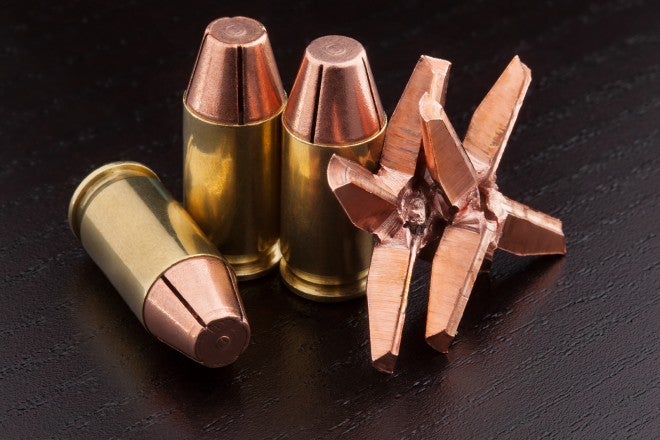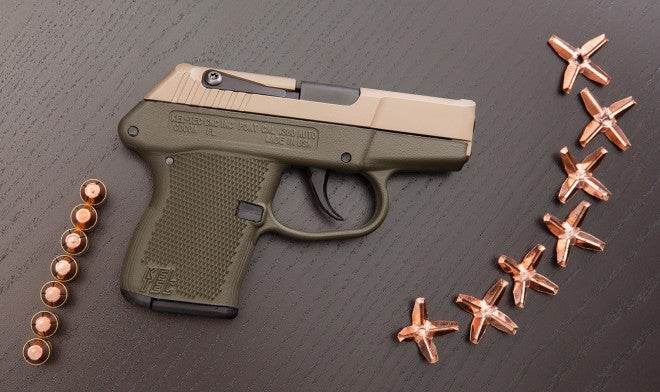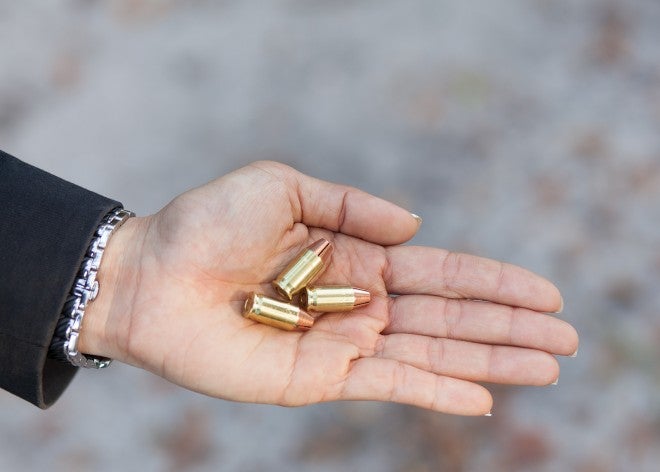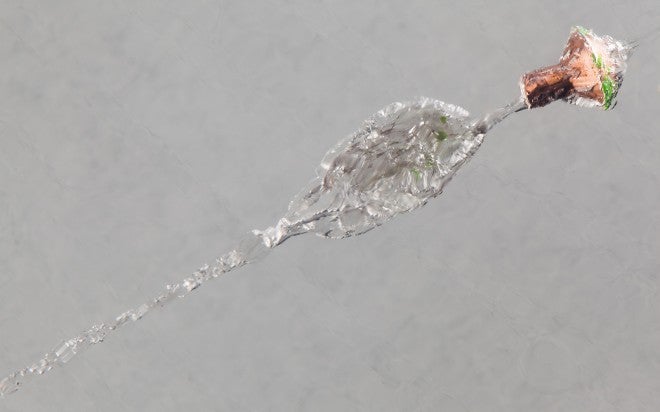Making the Best of .380 ACP Limited Ballistics
Oleg Volk 03.09.15

With .380 ACP, the traditional ammunition choices have been jacketed round nose 95-grainers or 90-grain jacketed hollow points. FMJ usually penetrates decently, but the rounded nose pushes tissue out of the way instead of cutting. JHP penetrates less and only expands reliably in larger pistols. With pocket pistols like Keltec P3AT or Ruger LCP, the short barrels yield marginal velocity for expansion. There’s also a limit to how wide the bullet cavity can be and still feed.
OATH Ammo (Merritt Island, Florida) offers a solution to this problem. Instead of using jacketed lead, which requires considerable energy to expand, OATH machines each bullet from copper, with expansion grooves pre-formed. The bullets are shaped like regular FMJs to aid in reliable feeding. Very little energy is needed to open them up upon impact. Full expansion happens within the first 1-1.5″. The little .355 opens up to over an inch in diameter, then travels for about 7 inches, turning sideways at the end of its travel. Since the rotational velocity decays slower than linear velocity, the bullet does act like a cutter.
The little item to the right is the nose cap. On impact, it pushes the hollow point petals open, then continues to penetrate deeper, about 14 inches in all. It flips end over end twice during its travel.
The powder mix with which the ammunition is loaded is optimized for short barrels. I saw no muzzle flash when firing, and the recoil was quite light thanks to the 75-grain bullet weight. While I have not done accuracy tests with the tiny 380, 9×19, 357Mag and 45ACP loads with Tango bullet were extremely accurate. Handheld, G23 and Sig 1911 produced 8-shot one-hole groups about 1 inch in size at 8 yards. Sub2000Mk2 carbine with a red dot gave 2/3″ one-hole groups at 25 yards.




